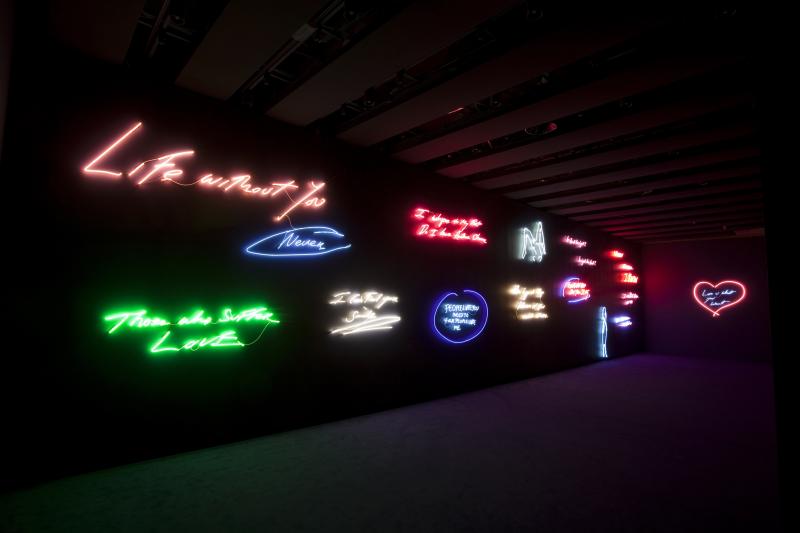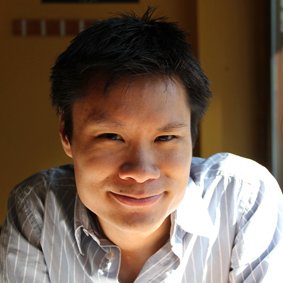Cliff Lauson: “It is very much about persistence”

Head Hayward Gallery Curator Cliff Lauson talks to Oli Rahman about working with Tracey Emin, being persistent and making exhibitions that matter…
My first experience of the Southbank Centre’s Hayward Gallery consisted of stumbling around an Antony Gormley exhibition called Blind Light (2007).
The sculptor, famous for the Angel of The North, had installed a huge glass box in the gallery and filled it with machines that blasted out a fog so thick you couldn’t see beyond your own flailing arms, despite the searing lights overhead.
You wandered around trying to avoid crushing strangers’ toes and totally losing your orientation. From outside the box you could occasionally see hands pressing against the glass like in a horror film.
That kind of entertaining show, like the current Martin Creed: What’s the point of it? retrospective (see our review) feels a bit more off-the-wall than some of the other offerings from London’s broad and diverse art scene. A sense of mischief and letting audiences get involved are some of the reasons the Hayward punches above its weight.
I’m here to meet the curator, Cliff Lauson. Originally from Canada, Cliff (or Dr Lauson if we’re being formal) started off his career at the Museum of Anthropology in Vancouver.
He’s curated at Tate, and has worked closely with a wide range of artists, that have recently included David Shrigley (Brain Activity (2012)), Ernesto Neto (Edges of the World (2010)) and Tracey Emin (Love is What You Want (2011), Emin’s biggest survey show in London to date).
And last year he curated an exhibition called Light Show that was so popular, it left people who’d booked in advance feeling more smug than people with a ticket for Willy Wonka’s Chocolate Factory.
I sit down with to find out more about the Hayward and his experiences as a curator, starting with a question on what he finds unique about the gallery.
“It was one of the first galleries in London designed to show art from scratch, purpose built,” he says.
“Unlike a lot of other museums and galleries now which are conversions. It’s a wonderful and amazing place to curate exhibitions. In a way I don’t think you could ever become bored of working in the space because it is so amazing,” he adds.
The brutal-looking jumble of a building, with its five galleries and three sculpture courts, doubtlessly stands out in the Southbank. I ask what sort of challenges he faces curating for artists in such an unusual space.
“One of the challenges is having the work sit well in the space, because if you’ve got a cavernous six metre room like the first gallery, you can’t hang small intimate drawings there,” says Cliff.
“It is always a balancing act. I think it’s a lot of fun as well, working with artists and working out how their work can challenge and push back on the space. The concrete architecture is quite strong visually. And so artwork really needs to hold its own and push back against it.”

I ask if Cliff has any tips for wannabe curators and students wanting to make their names in the art world.
“I don’t know if there is a hot tip I can share for becoming a curator,” he laughs. “Looking back I certainly do remember sending my fair share of CVs for internships.”
Cliff is a youthful-looking 35 and has a calm, easy going manner. He says that the important thing for prospective curators is to learn by doing.
“Like a practise, and in some ways in parallel to an artistic practise, it is very much about persistence and always knowing that you want to apply the knowledge you pick up, perhaps at University.
“In my case it was ensuring that one foot was always in the museum/gallery sector with the other in the study/research side of things.”
“And a fair amount of good luck,” he adds with a laugh.
He moved to London to do a Masters in History of Art at UCL in 2004, following it up with a PhD. During this time he says he started seeking out art-related work, and found a position at Tate Modern after finishing his doctorate.
Eventually he landed at Hayward.
I ask what he thinks about the increasing number of university courses in curatorship.
“I would expect that a lot of students who are interested in that as a field would enrol on curatorial courses, museum studies programs,” he says.
But does he think employers might look down on people who choose curator-specific courses as a way to break into the art sector?
“I think it’s incredibly difficult to generalise because there are so many different kinds of jobs in the art world, from a historic curator to a very technical conservator, to a registrarial post to a curator and, of course, a curator of anything. There’s all kinds of expertise.”
He adds that he preferred “to learn how to curate by doing, rather than study how to curate.”
He went on: “And I’m drawing something of a false distinction there because of course some curatorial programs are hands on and practice-based, so it’s not as though the two are completely exclusive.”
He talks slowly and precisely, sometimes pausing to look for the right word or phrase. It makes my own sentences sound oafish in the recording.
I ask what kind of feedback he’s had from the Martin Creed exhibition so far.
“I think people find it fascinating as a world view. It’s kind of like stepping into the head of the creator for an hour and then coming out and thinking : wow. That was kind of…” he laughs.
“A bit in awe, a bit confused, a bit happy. A bit sad.”
And what was it like working on Tracey Emin’s show?
“Although a lot of her work does appear that it’s just her wearing her heart on her sleeve or baring her soul, its actually not that easy to simply do that.”
“I think she gives great care into thinking about how her stories are told.”
Finally I ask what he sees in the future for Hayward, and for himself.
“There is so much work to be done still that one is grateful just for the time to keep chipping away at that,” he says.
“You always hope at the end of the day that you make shows that matter both in terms of the artists, audiences and ultimately you can’t be the judge of it, only art history can judge. Of course the Hayward is a great platform for that.”
Oli Rahman
Follow @clifflauson on Twitter
Martin Creed: What’s the point of it? continues until 5 May 2014, £11/£10. See here for the full programme of Southbank Centre’s events and exhibitions





